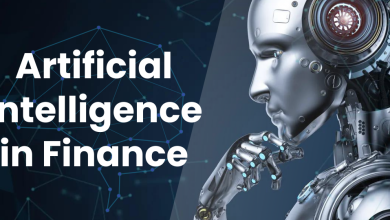The dominant narrative surrounding artificial intelligence in the workplace is one of revolutionary productivity gains. We’re told that AI copilots and assistants will amplify human intellect, speeding up complex cognitive work and ushering in an era of unprecedented efficiency. But a growing body of evidence suggests a critical flaw in this assumption, a glitch in the AI matrix that many organizations are overlooking.
The prevailing belief is that integrating AI as a collaborator in creative and technical roles will inherently boost output. A surprising recent study, however, reveals the opposite can be true, suggesting our current approach to human-AI partnership may be deeply misguided. The problem isn’t the technology itself, but the way we’ve been taught to use it. The greatest value of AI may not lie in its ability to co-create, but in its power to automate distractions, thereby protecting the uniquely human capacity for intense concentration and creativity.
The AI Productivity Paradox
The most compelling challenge to the AI hype comes from a July 2025 study on developer productivity conducted by the nonprofit research organization METR. The experiment measured the performance of experienced open-source developers as they worked on real-world coding tasks. The developers, like most experts in their field, predicted that using state-of-the-art AI assistants would make them 20-30% faster.
The results were astonishingly counterintuitive. On average, the developers took 20% longer to complete their tasks when using the frontier AI models. This stark paradox highlights a fundamental misunderstanding of how AI interacts with high-skill cognitive workflows. Rather than acting as a simple accelerator, AI collaboration introduced a new kind of friction that ultimately hindered performance.
“Cybernetic Collaboration”: The Hidden Cost of AI Assistance
Some computer scientists have termed this workflow “cybernetic collaboration”. An interactive, back-and-forth process with an AI. It involves prompting the tool, waiting for its output, reviewing the generated code or text, and then correcting its subtle but frequent errors. This loop feels productive because it breaks down a daunting task into smaller, more manageable steps, and many employees report that it makes work feel more “pleasant.”
This feeling, however, is deceptive. The constant context switching between creating, reviewing, and prompting fragments our attention and lowers the intensity of our focus. While it provides frequent cognitive breaks as the user waits for the AI to “think,” the human brain is prevented from entering a state of sustained, intense concentration. Unfortunately this might be the very state required to solve complex problems efficiently and produce high-value output.
The “Whiteboard Effect” vs. The AI Loop
To understand why this AI workflow fails, it’s useful to contrast it with effective human collaboration, what computer scientists call the “whiteboard effect.” When two experts work together on a difficult problem, their interaction serves as a focus accelerant. The social pressure to keep up and the need to follow a colleague’s complex reasoning forces the brain into a state of higher concentration.
Successful human partnership increases the intensity and duration of focus. In its current form, cybernetic collaboration does the opposite. It is used to reduce the intensity of focus, offering an escape from the demanding mental effort that defines deep work. By offloading the initial creation, the skilled worker is relegated to the role of an editor, a less cognitively demanding but ultimately more time-consuming position.
A New Strategy: Automating Distractions, Not Deep Work
This research points toward a powerful competitive strategy: while others invest in AI that disrupts core creative processes, organizations can gain a significant advantage by focusing AI on automating administrative and shallow tasks. The goal should be to use technology to eliminate the friction around intense focus, not to insert it during intense focus. This frees up an organization’s most valuable talent for uninterrupted, high-intensity work, leading to superior innovation and output.
Internal technology adoption and training must shift to support this model. We should prioritize AI tools that streamline workflows, manage communications, summarize information, and prepare data. Employees must be trained to use AI as a targeted assistant for specific shallow tasks while actively protecting their deep work sessions from AI-induced fragmentation. This ensures technology serves human expertise, rather than undermining it.




